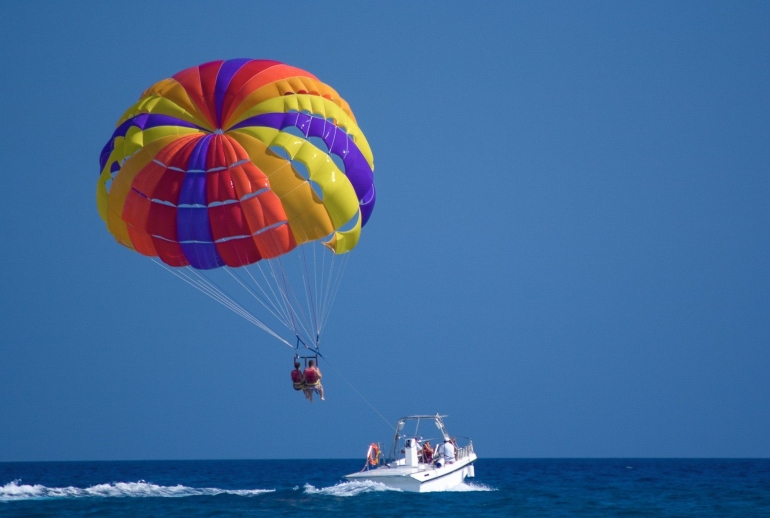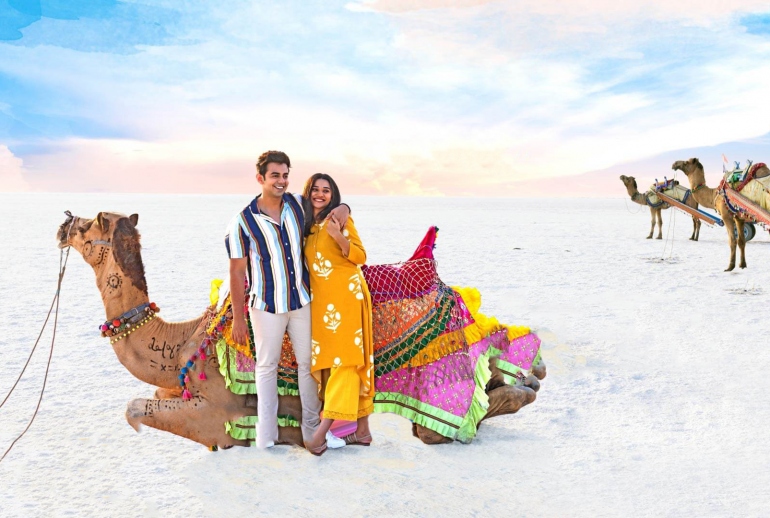10 Places For Stargazing In India
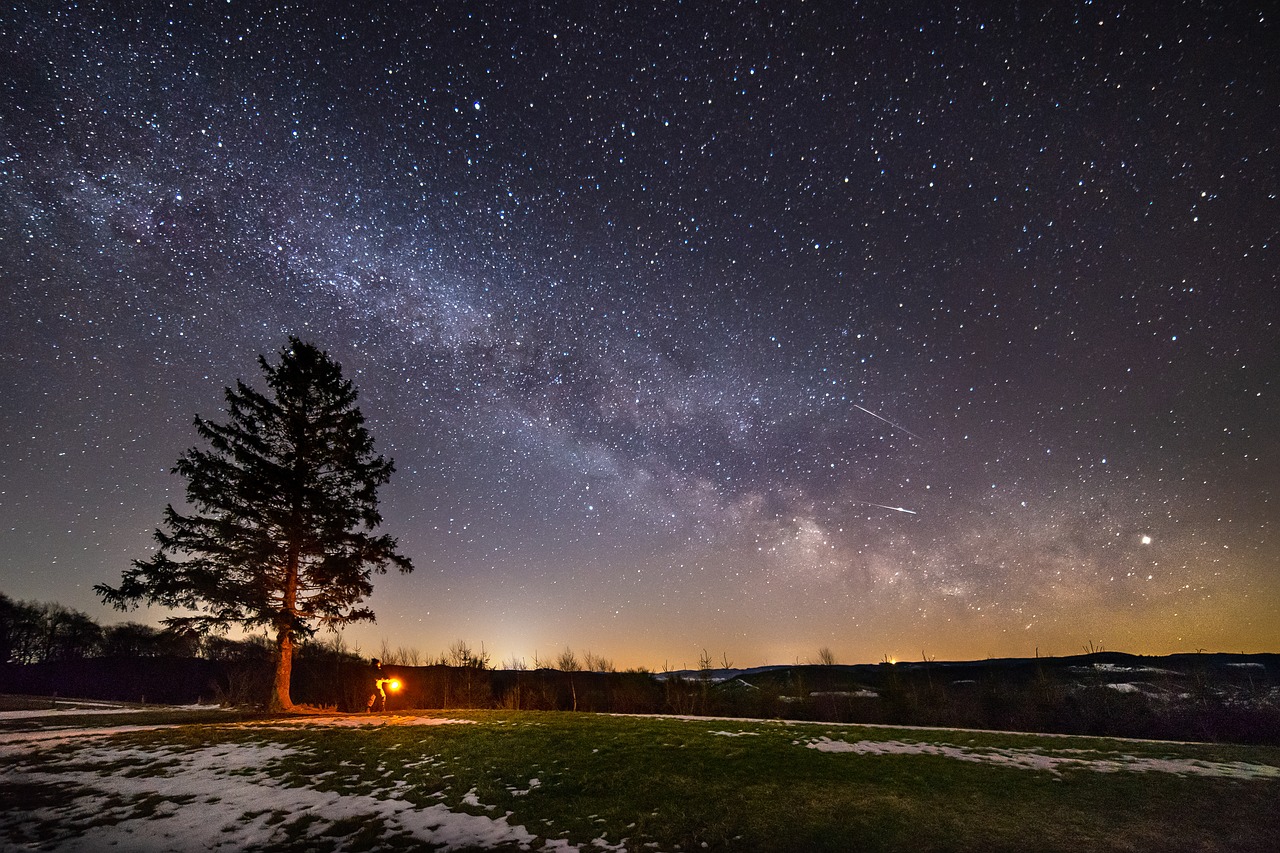
Space has always been a topic of mystery, fascinating some, scaring others, but better than that, unknown to most of them. Stargazing isn’t just an activity, some call it a passion, some call it a hobby, while some even make a living out of it. But, better than all that, staring into the deep abyss of darkness and solitude, one would not expect to find such beauty lying hidden, that is what stargazing is all about, exploring the hidden beauty of the space. What if we tell you that you can explore the cosmos from the places for stargazing in India? Yes, you read it right, the shimmery beauty of the dark night can be seen from various parts of India, a few of which have been discussed below.
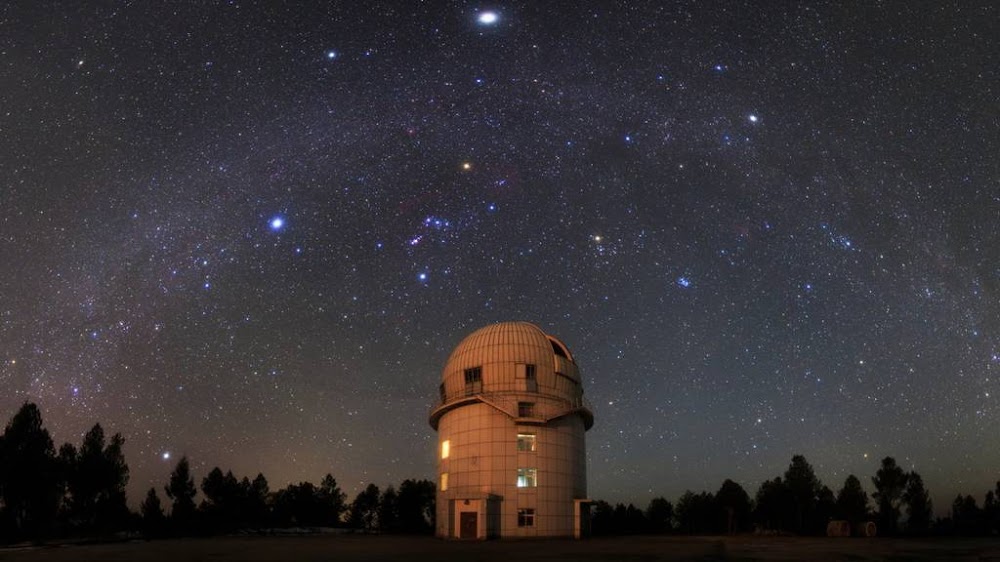
We live on to being young beings who lie on grassy hilltops staring at those magical twinkling beauties. In today’s overcrowded, dirty, chaotic, hued environment, gazing at the black abyss of the enormous heaven with innumerable constellations looking down at you is a rare sensation. During your next trip, escape the city’s strobing lights and view life in its most impressive form.
Best Places For Stargazing In India
There are a plethora of places where you can go and see the star adorning the jewels of the cosmos within India. Here we have curated a list of a few best places to see the milky way in India:
Pangong Tso:
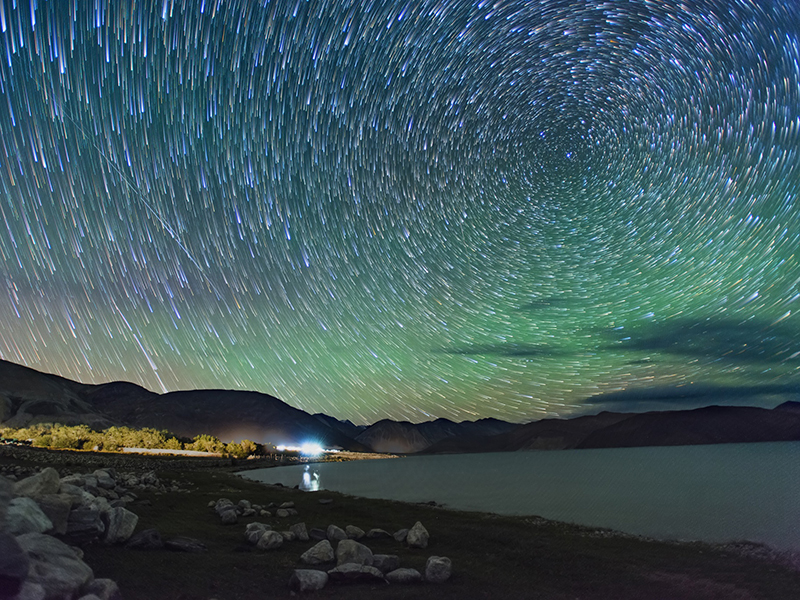
It is an inland river basin in Jammu and Kashmir that is recurrently opted in Bollywood choreography segments, which include Shah Rukh Khan’s songs majorly! Pangong Tso is one of the places for stargazing in India. has one of the loveliest illuminated night skies in the nation in any given season, the celestial skies adorned with a hilly backdrop that’s far more wonderful to look at in the winter season when it is all covered in snow.
- Best time to visit: Pangong Tso is best enjoyed from June to September, because the trip will be less delightful in the cold season due to the severe conditions, and also the lake will be frozen too.
- How to reach: It takes about 1.5 hours to fly from New Delhi to Leh. When you arrive in Leh, hire a car that can take you to your lodging in five hours. The lake is situated on the Sino-Indian Line of Actual Control, so you must obtain Inner Line clearance to reach there.
Ladakh:

It is among the best places for stargazing in India. Nubra Valley in Ladakh will uphold your celestial fantasies with incredible panoramas of the dark sky. The mornings will be loaded up with enthralling wetlands and breathtaking scenery, and the nights will be stuffed with glittering evening skies. In addition, the Shanti Stupa, which is only 4 hours away from here, is an incredible place for stargazing as well.
- Best time to visit: Nubra valley is best visited from June to September during the summer season and hotels in Leh Ladakh are best when it comes to a comfortable stay. The cold ice-capped peaks may serve as a beautiful backdrop but staying outdoors during the night may not be the best-advised trip.
- How to reach: Nubra valley is about 5 hours drive, which is 140 km from Leh. The Leh airport is well connected to several major Indian cities like New Delhi, Mumbai, etc.
Jaisalmer:
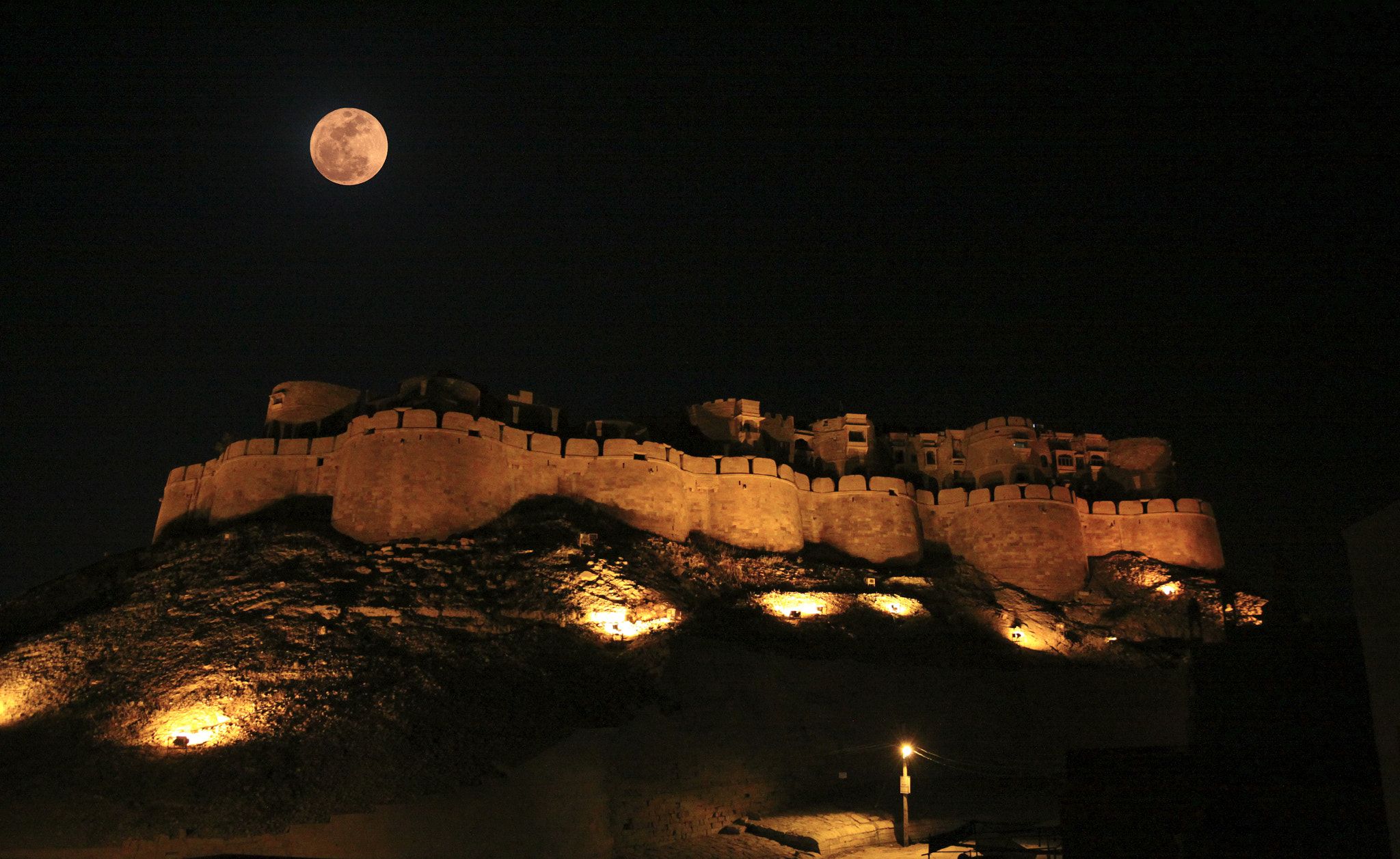
If you are looking for stargazing camps in India, count Jaisalmer on your list. Skywatching in the Indian dunes always seems to be memorable. Unaffected by any tangible impediment, you will not be sorry if you seek a sightseeing safari tour at Jaisalmer that includes a night in the wilderness the next time. Don’t forget to book Jaisalmer hotels in advance when you head there.
- Best time to visit: The months of October to March are ideal for visiting Jaisalmer since the environment is lovely. Summer weather is particularly sunny and dusty and should be resisted.
- How to reach: The closest airport is roughly 300 km away in Jodhpur. A train can be taken from there. Jaisalmer is well accessible by train to all metropolitan areas.
Katao:
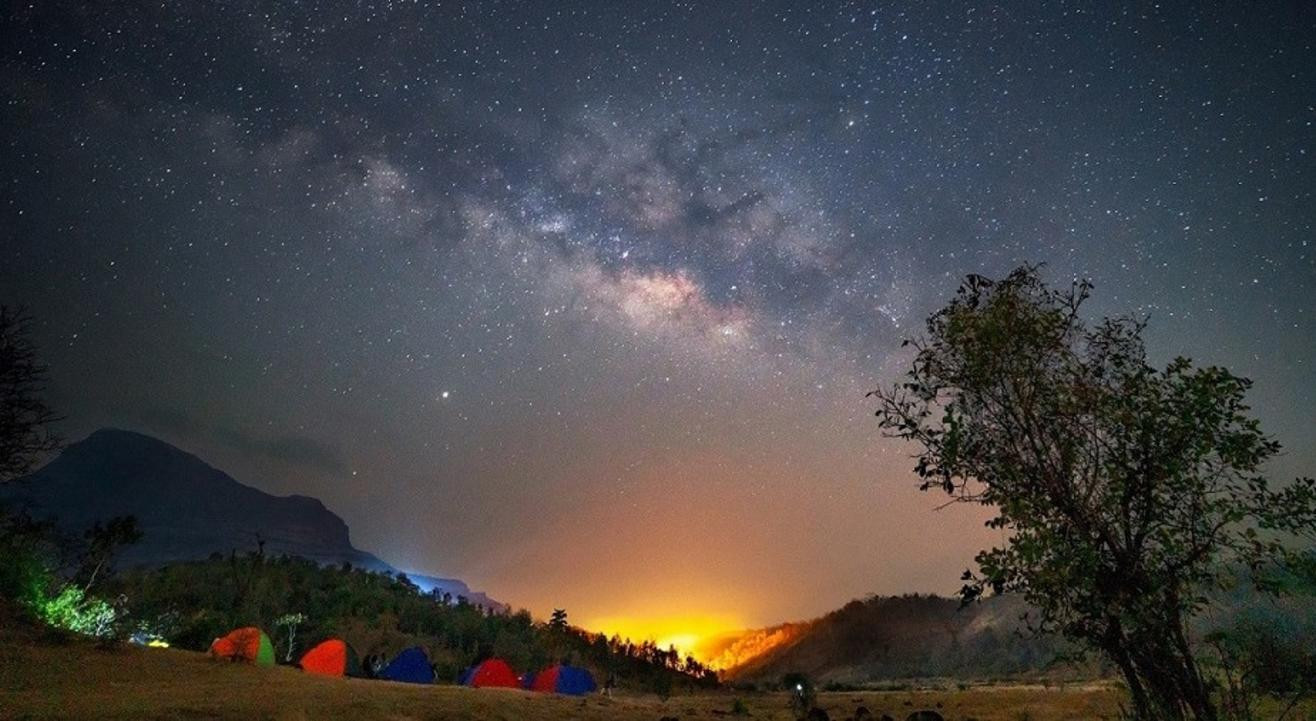
Katao in Sikkim is a far more whimsical location to go for stargazing in India, dubbed the “Switzerland of India” for reasons other than its imagery in the winter weather. The night skies are vibrant, uncontaminated, and wonderful, and the number of tourists is negligible as well.
- Best time to visit: The season to visit Mount Katao is from March to June when the weather is mild and delightful.
- How to reach: Mount Katao is located 28 km from Lachung and it can be reached by taking a cab or driving your car. Nevertheless, you must first seek permission from the military post in Siliguri.
The Rann of Kutch:
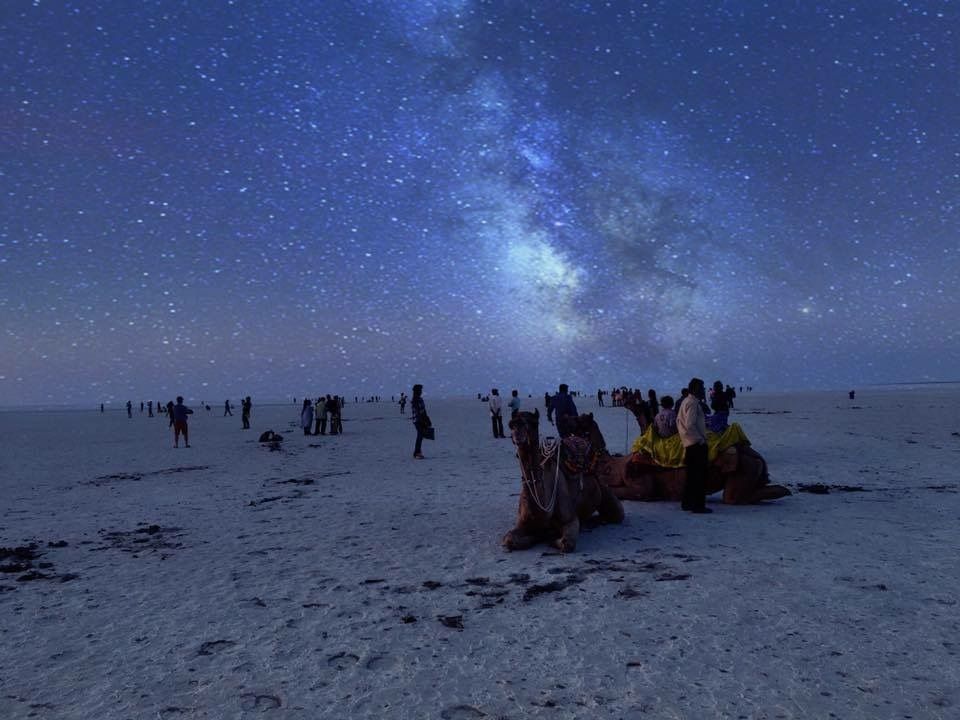
It happens to be the world’s largest salt marsh. A mysterious light phenomenon called Chir Bhatti, also known as the Ghost lights can be seen here, along with the incredible views of the sky at night. Spatial cosmology and astrophotography are both doable from here, and also most visitors report seeing stars with magnitude up to 6, with the unaided eye. This is one of the best places to see the milky way in India.
Best time to visit: The Great Rann of Kutch is best enjoyed during October and March when the temperatures are mild enough to enjoy the scenery.
- How to reach: The nearest railway station is Bhachau Railway Station which is about 80 km far. The nearest airport is Kandla Airport, roughly 100 km from the saline wilderness. Cabs and taxis ply regularly from here.
Neil Island:
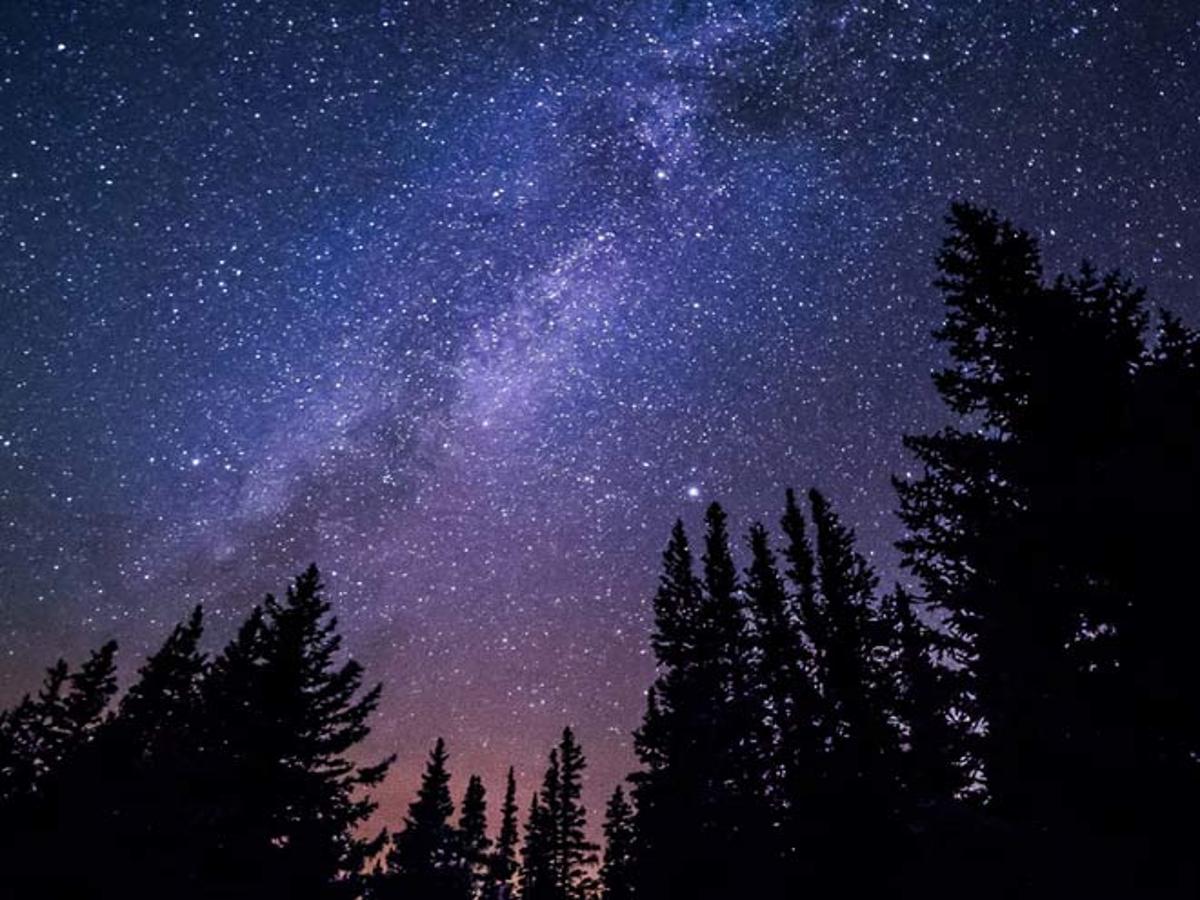
It is one among the Andaman and Nicobar’s 572 islands and is illuminated by hundreds of stars at night. Its coastal forests make for an excellent breeze to fondle your face whenever you lie upon the nice and peaceful shorelines. The horizon is streaked with constellations for vast stretches as far as you’ll see or try to see, making it the perfect place for stunning stargazing resorts in India. Bring a pair of binoculars or a telescope along with you to maximize your experience.
- Best time to visit: Neil Island can be visited all year round but is best explored during the colder months, which run from October to February. During this period, the tropical island offers moderate winter weather.
- How to reach: Neil Island can be reached by boat or a ferry from Port Blair or Havelock Island. Port Blair is well connected to the world via numerous flight routes.
Mandarmani:
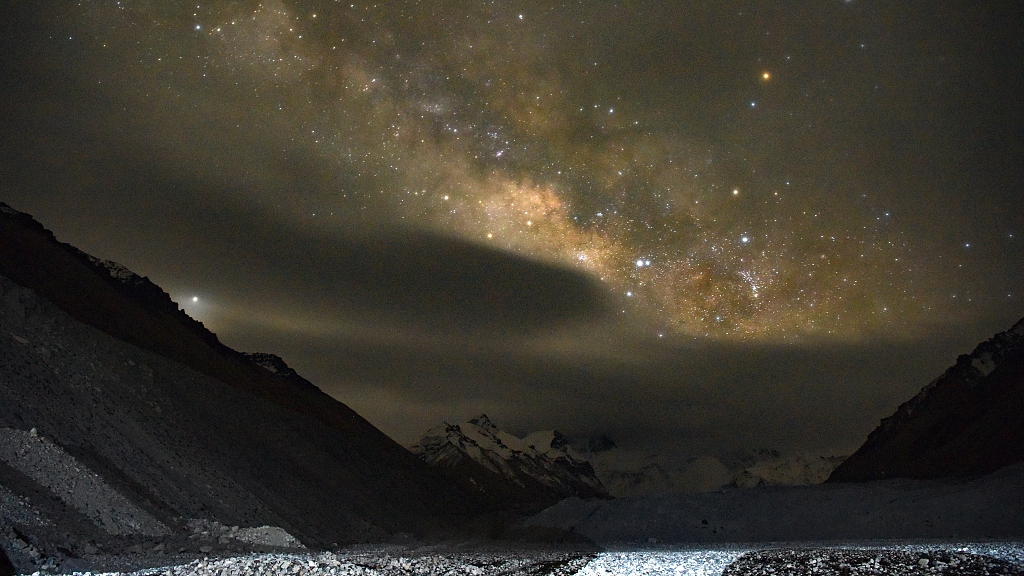
It is an offbeat, yet lesser-known skywatching site in West Bengal, and has one of India’s most dreamy night skies. The ideal chance to view the evening sky with almost no air pollutants is around Mahalaya (New moon night), making it to be one of the best places to see the milky way in India.
- Best time to visit: Mandarmani sees a tropical climate so it can be visited all year round. Summers can get extra humid, winters mild and not cold, so you can visit this beach town anytime.
- How to reach: The closest airport to Mandarmani is Kolkata International Airport. Visitors can arrive at Mandarmani by train since the closest railway station is at Digha.
Coorg:
It is a favorite destination for newlyweds and tourists looking for a brief and lovely getaway, and also boasts magnificent nightlife, in the notion of the liveliness swept into the heavens by the starry sky. You’ll need hotels in Coorg to enjoy the best of this event. It allows for a romantic evening in the woods with nothing but the starlight sky for companionship. It is a must-see destination for stargazing in India.
- Best time to visit: The greatest season to visit Coorg is from October to June when the climate is beautiful with no rainfall. It is wise to avoid traveling during the monsoon season of late July and August owing to torrential rains and landslides.
- How to reach: Coorg lacks a railway station and an airport. The nearest station is in Mysore which is 120 km away, and the closest airport is in Mangalore which is 152 km away, from where travelers can take public transport or cab to Coorg.
Yercaud:
Yercaud in the south, one of India’s undervalued hill regions, also offers great prospects for astronomy. It is known as the Gem of the South since it is surrounded by nature on all sides and is embellished with threads of moon and stars at night. In case you want some jungle walks along with stargazing camps in India, Yercaud is the best spot for you.
- Best time to visit: The months of October to June are ideal for visiting Yercaud since the climate is pleasantly cool.
- How to reach: The closest airport to Yercaud is Trichy which is 163 km away, and Bangalore airport, which is approximately 230 km away.
Hatu peak:
If you happen to be finding the best spots for stargazing near Delhi, the Hatu peak has to be on your schedule. The mountain itself is less well-known and must be reached via treacherous routes. The image of the hilly terrain with the constellations spreading out will stay in you for a great, long period. It is a wonderful location for stargazing in India.
- Best time to visit: It is preferable to explore Hatu Peak during March and October when temperatures are moderate and pleasant.
- How to reach: The only way of reaching Hatu Peak are via the little village of Narkanda. It is a major thoroughfare on the Shimla-Rampur bus route. If you may not want to take public transportation, you can find a decent car or taxi to get around.
Prerequisites for Stargazing:
Looking up at the sky is surely an enthralling experience, but do you know what exactly you are looking at? It is better to have some background knowledge about the cosmic beauty you are yet to see. Many people are familiar with them already, so here’s a background checklist of everything that you need to ensure and know before going:
- Have the background knowledge: Learn the Lunar Calendar, familiarize yourself with the names of constellations and stars, and conduct a basic study on how much you can see if you look up during the night.
- Weather: Check the news for weather updates and ensure that the skies are clear and away from the city or neighboring town as light might obstruct your vision.
- Equipment: Pack appropriate equipment and do follow the procedures to safeguard the equipment from snow, moisture, or dust.
- Technology: Apps such as Google Sky Map or SkyView can assist you in locating stars, satellites, and constellations, among many other things.
List of Items You Will Need:
Asterophiles, there are certain things you should not forget while backpacking for stargazing ventures. Here’s what you will need when you visit any of these places:
- A red flashlight to improve night vision when looking up at the sky.
- If you’re old school, use a handwritten star chart, otherwise, use a sky globe app on your phone.
- A refractor telescope is ideal if you are an amateur, whereas a Dobsonian telescope is more sophisticated and for professionals.
- A battery power bank for all of your backup battery requirements.
- A comfortable sleeping bag, a knapsack with necessary snacks, and a camper.
Stargazing Without Equipment:
You do not need advanced tools to savor the night sky; with even a little knowledge, you can do it yourself. This is how it’s done:
- Use a map to familiarize yourself with the sky at night so you understand what you’re looking at.
- Pick a good location that is free of city lights and is elevated enough to provide unhindered panoramas.
- Allow your eyes to adapt to the dark sky. You mustn’t disrupt this adjustment period by checking your phone or turning on a flashlight.
- It is not necessary to have a professional telescope, the majority of celestial events can also be seen from the naked eye.
Tips for Amateur Astrophile:
If you’re carrying a telescope, make sure you take care of the following points:
- Arrange your telescopes 1 hour before your estimated watch time. This would assist the lenses in adapting to the environment. It’s particularly meaningful in moist climate regions.
- Position your telescope so that the focus does not aim toward any illumination around you.
- Locate a flat area for the apparatus and level the telescopic body with the tripod legs.
- Switch off any nearby lighting, especially inside and outdoor light sources.
If you are a teenage sky lover, make sure you take your parents with you and do not wander off in forests or hilly valley areas all by yourself. It can be dangerous, particularly during the nighttime. Make sure you know which constellations are visible from the northern hemisphere, and you take an app or a sky chart with you for reference.
Read More: 15 Amazing Hill stations near Kolkata
Photographing the Milky Way
Cameras these days are built with better lighting features to see even the specks that the human eye cannot. This is why a DSLR camera will be a helpful resource for you to capture the milky way. An entry-level photography package will enable anyone to experiment with long-exposure astrophotography to see just how much illumination you can capture in the celestial sphere. The Milky Way is ideally shot with no need for a filter, in clear, dark, new moon skies. If you can’t fly to a stunning location like it, a little haze filter might assist. Use the largest aperture on your lens, or something close to that. Take thirty-second exposures. This maximizes the luminosity captured within every individual frame and your milky way photo is ready to hit Instagram to make everyone go “Wow!”
Read more: Mini Switzerland of India- Khajjiar
Stargazing Camps in India
There are almost no structured excursions that focus on stargazing in India, but a multitude of venues, which include Soulitude in Uttarakhand’s Himalayan region, The Pugmark Resort just next to Ranthambore National Park in Rajasthan, and Astroport in Sariska, are positioned in prime stargazing locations to provide celestial night outs, along with the necessary equipment, and even seminars sometimes.
Read More: 32 Best Winter Vacation Destinations in India in 2022
You can independently visit the mentioned stargazing camps in India to view the celestial phenomena by yourself. Nearby lodgings and hotels can be preferable options for stay. The rest of the things have to be managed by you. There are a lot of tourists you may find with similar interests when you reach the spot, so you don’t have to worry about solitude during your stargazing night.
The following stargazing resorts in India are renowned for the experience they offer to all the star lovers. At these places you can sleep under the blanket of starry night and immerse yourself in the bliss of cosmic heavens:
- The Outer Space, Sathram, Kerala
- Taara House, Manali
- The Goat Village, Nag Tibba, Mussoorie
- Khyber Himalayan Resort & Spa
- Itsy Bitsy Dome, Parvati Valley
- Glamp Eco, Manali
Conclusion
Even if you are not someone with a keen interest in space or a keep astrophile for that matter, but still you might find asking yourself if there are any suitable stargazing places near me? The answer to this question is yes, there are plenty of such places in India. India has a multitude of stargazing places all across the nation. Some of the best spots to stargaze are Ladakh, Coorg, Neil Island, Mandarmani, Jaisalmer, Hatu Peak, Yercaud, Rann of Kutch, and Katao.
Just as pleasing this activity of stargazing might seem, you cannot just practice it anyway, which brings us to question what, the best time for stargazing in India is like? Look for Amavasya or new moon nights. Keep an eye on the lunar calendar as the dates around the new moon and the day of the new moon itself are the best recommended for stargazing in India.
There are hundreds, maybe thousands of galaxies, but the best one out of those in our galaxy, is the Milky Way Galaxy. The best places to see the Milky Way in India include Nubra Valley, Pangong Tso, Jaiselmer, Coorg, Spiti valley, Hatu peak, and Yercaud. These places are not just some of the best places to see the milky way in India, but instead, these are some of the most beautiful astronomical sighting locations in India. Check HotelDekho.com for the best tour packages, travel guides, and hotels for the best offers and discounts.

